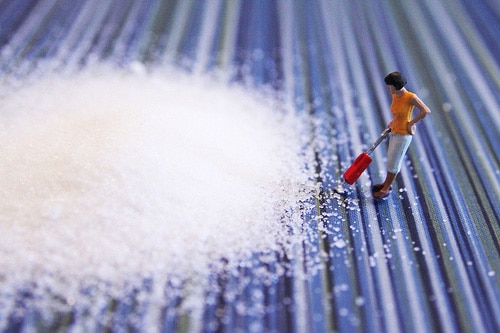There are moments in life that can really pull you off track from improving your health; birthdays, anniversaries, holidays, you name it. Why do we get derailed during these occasions? Because most of the sweet treats Americans “celebrate” with are like gateway drugs that open the door to poor dietary habits and chronic disease. The taste of sweet is a natural and healthy part of our taste sensation. You may not realize this, but food chemists have found some pretty ingenious and toxic ways to trick your taste receptors into thinking they taste sugar (think sugar free or “low carb” chocolates and candies) – there are some naturally occurring plant compounds that can do the same. There are healthier sugars that absorb slowly into your blood stream and not-so-healthy sugars that have a rapid absorption rate. The key to avoiding the bad stuff and keeping that chronic disease door shut forever is in knowing which is which and understanding what the side effects are. Here are a few examples of the good, the bad and the toxic sweet substances in our food supply:
The Good – use in moderation
Chicory root (also labeled as inulin) is a natural sweetener that doesn’t have a significant effect on your blood sugar and has a smooth mild flavor. It’s often found in combination with other sweeteners like stevia at health food stores.
Stevia is a natural sweetener that comes from the stevia plant. It doesn’t have a significant effect on your blood sugar, but it does sometimes have a bitter aftertaste. Look for blends that contain inulin, but avoid blends that use sugar alcohols.
Coconut palm sugar comes from the coconut palm tree. It’s a low glycemic sweetener (meaning it absorbs slowly into your blood stream) that tastes and looks similar to brown sugar. It’s minimally processed so that it retains naturally occurring minerals and amino acids which really make this a nutrient rich sweet choice.
Raw agave nectar comes from the agave plant and is considered low glycemic. It’s had some bad press, but the truth is that agave is a healthier choice as long as it’s minimally processed (organic and raw). It is much sweeter than sugar, so you would never replace it in a 1:1 ratio, in baking or for sweetening beverages.
Rapadura is the most minimally processed cane sugar – it is dehydrated at low temperatures so that the grainy (yet dissolvable) powder retains the minerals and enzymes found naturally in the sugar cane.
Raw cane sugar (also labeled as turbinado, sucanat, or evaporated cane juice) is a less processed sweetener, but still high glycemic, so use it with caution.
The Bad – try to avoid
Sugar – anything labeled as “sugar” is likely the well known white granulated sugar that we all grew up with. This stuff is highly processed and refined so that it has no redeeming nutritional qualities and is very high glycemic. It’s been stripped of its nutrient rich molasses, chemically washed and bleached so that it is unnaturally white and crystallized.
Sugar alcohol is a processed sweetener that has a more mild effect on your blood sugar than regular sugar (about half the absorption rate). Although some sugar alcohols do occur naturally, like mannitol, food manufacturers’ typically use sugar alcohols that have been created in a lab by hydrogenating sugar. They don’t digest easily, so diarrhea, bloating and gas are all common side effects of consumption.
Fructose is a form of sugar that comes from fruit, however, the isolated fructose found in processed foods is usually derived from corn and has been linked to fatty liver disease in high doses.
The Toxic – avoid at all costs
High fructose corn syrup is the highest glycemic sweetener we have in the standard American diet. As you start reading ingredient labels, you’ll see that it is prevalent in the most popular American foods – pasta sauce, pizza sauce, ketchup, muffins, kids’ cereals and fruit drinks, not to mention, sodas, candies, chocolates and packaged baked goods. The prevalence of HFCS in our foods is in direct correlation with the obesity and diabetes epidemic in this country, so look for it on ingredient labels and avoid it at all costs!
Artificial sweeteners (aspartame, saccharin, and acelfame K) are highly toxic substances, especially as they accumulate in fatty tissues (like your brain or adipose tissue) over time. These substances are linked to obesity, diabetes and stroke as well as neurological disturbances like migraine headaches and poor mental acuity.
Sucralose is also an artificial sweetener often touted as being “natural” because it’s made from sugar. The truth is that sucralose is made in a lab by binding white sugar (already on the avoid list) with chlorine. It’s been linked to the same chronic diseases as other artificial sweeteners, so make sure to check ingredient labels and avoid at all costs.
Think about it – if you’re celebrating an occasion by “treating” yourself to a dessert, shouldn’t you choose something that won’t harm your body? Choose a sweet option that really will treat and not defeat your health today so that tomorrow will be worth celebrating!



